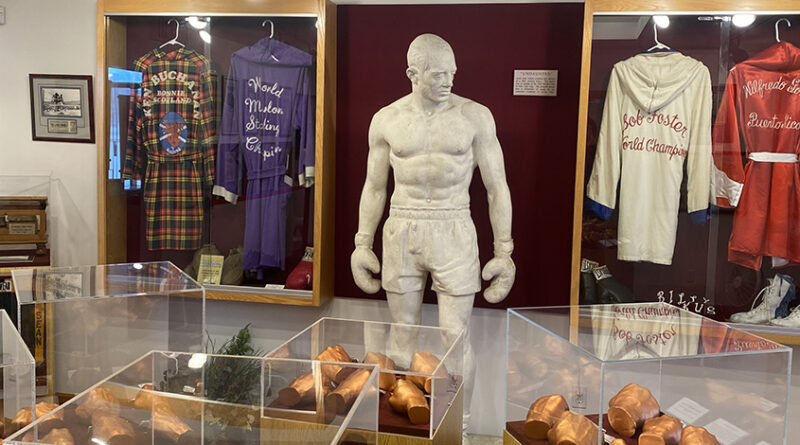ED BROPHY: International Boxing Hall of Fame a Labor of Love for Longtime Executive Director
By Ken Sturtz
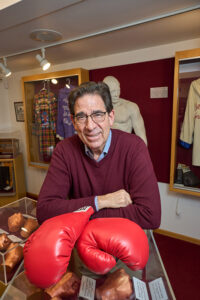
Photo by Chuck Wainwright
He can’t remember exactly when, but when Ed Brophy was about 7 or 8 years old, he fell in love with boxing.
From a young age he remembers friends and family discussing boxing at birthday parties, family dinners and the local diner much in the same way Central New Yorkers today talk about Syracuse basketball or the Buffalo Bills.
“Boxing talk was always around me because Canastota has a long boxing history,” he said.
As a kid Brophy began thumbing through “The Ring” magazine, boxing’s premier periodical, and took odd jobs to scrape together enough money to buy it and other boxing books. But his fascination with boxing was cemented when he was a teenager and welterweight champion Billy Backus moved into the house next door.
Brophy has served as the executive director of the nonprofit International Boxing Hall of Fame in Canastota for more than three decades, helping transform it from an idea into reality and then growing it over the years to become the undisputed mecca of boxing. He’s experienced boxing as an amateur fighter, trainer, manager, promoter and historian.
“Through it all my love of boxing just continued and the love of Canastota’s boxing history,” he said, adding that he remains energized about boxing even all these years later.
Brophy is immensely humble and quick to point out that the hall of fame’s creation and survival is the result of countless supportive government officials, community leaders and volunteers. But there likely wouldn’t be a hall of fame without Brophy.
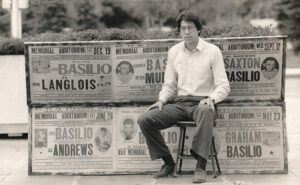
He said his success with the hall of fame over the years is due to “so many great people of our community” as well as his upbringing.
“I was very fortunate. My mother taught me about faith, my father taught me about working hard,” he said. “Together that combination has served me well.”
Brophy, now 62 years old, grew up during one of boxing’s golden ages. In 1971, when he was 15, he sat by the radio eagerly listening to round-by-round reports of “The Fight of The Century” at Madison Square Garden.
It also helped that he grew up in Canastota. The blue-collar Madison County community was the kind of place where boxing thrived in the 20th century and it produced a steady stream of prominent trainers, promoters and fighters.
None was more famous than Brophy’s personal hero Carmen Basilio. The son of an onion farmer, Basilio worked in the onion fields as a youth, taking up boxing at age 13.
“His dream was to come off those fields and become a fighter,” Brophy said.
Basilio won the world welterweight title in 1955. In 1957, in arguably his greatest fight, he defeated Sugar Ray Robinson for the middleweight crown before a crowd of 40,000 at Yankee Stadium. In an era when boxing was ubiquitous, Basilio was featured on the covers of Life and Sports Illustrated.
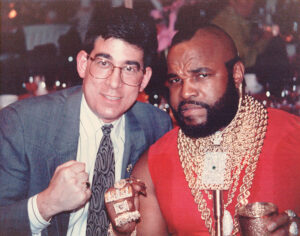
As a kid Brophy remembers eating at the Chatterbox Diner in Canastota with his mother and father and watching in awe when Basilio would walk in. He’d be sitting in the same booth as Brophy’s parents and chatting with them. He said Basilio’s tenacity rubbed off on the town.
“He was our hero and he taught us the can-do spirit even if the odds are against you,” he said.
When Backus, Basilio’s nephew and a professional fighter himself, moved in next door, a teenaged Brophy became friends with Backus and his trainer.
Brophy got to watch Backus as he trained to fight for the world welterweight title and traveled to his fights. Backus trained at the Water Street Gym in Syracuse and his trainer let Brophy work out with them. He eventually had some amateur fights of his own.
The first hint of what would become the boxing hall of fame began in the early 1980s when residents in Canastota decided to honor Basilio and Backus and began fundraising, eventually erecting a small showcase building that featured life-size statues of the fighters and displayed some of their boxing memorabilia.
“That really was the springboard to say let’s honor the whole sport,” Brophy said. “Boxing needs a hall of fame and never had one.”
Brophy said a group of community members reasoned that Canastota was the perfect place for a shrine to the sport. He was just 27 years old when the group held a press conference at a local restaurant in 1984 to announce its plans and ask for support.
“And we knew that we had to work on it full time,” he said. “Meeting once a month just wasn’t going to make it happen on a project of this magnitude.”
Brophy had been promoting boxing shows at the War Memorial in Syracuse and had a relationship with the New York State Athletic Commission, which regulates boxing. The group thought he would be the best person to lead the effort and he agreed. Brophy quit his day job with a novelty vending company and worked on the boxing hall of fame full time.
“We took a chance,” he said. “When you’re young, you take chances and try to make something nice happen.”
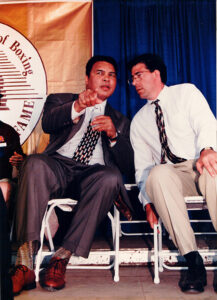
Brophy threw himself into the project. He wasn’t exactly starting from square one. He knew boxing and he had always been involved in community projects, such as helping run the local youth center in high school.
He said he was helped by the fact that the entire community was extremely supportive of the project. The mayor, for example, gave the group some office space to get started. Others volunteered and helped with fundraising.
Five years later, in 1989, the International Boxing Hall of Fame officially opened its doors. In 1990, it enshrined the first class of boxing greats.
Next year will mark the 35th anniversary of the hall of fame’s opening and it has grown dramatically from its modest beginnings.
Brophy has overseen an addition to the hall of fame building and the construction of an event pavilion. The museum’s collection of artifacts now far exceeds its display space.
The annual Induction Weekend held in June has grown into a who’s who of boxing, featuring events at nearby Turning Stone Resort and Casino, including a nationally televised fight. Residents who moved away often come back to visit on that weekend and adults who watched the parade of champions through town as kids now repeat the ritual with their children.
“So, it’s gone through a couple of generations,” Brophy said. “The hall of fame is really woven into the history of Canastota now.”
Running the hall of fame has also come with its share of challenges. Brophy said surviving the COVID-19 pandemic was difficult. In 2015, six championship belts were stolen in a break-in.
And raising enough money each year to fund its budget keeps the museum’s small staff busy.
“Fundraising is a necessity,” Brophy said. “There’s no way around it to keep a sports museum going.”
The hall of fame derives its revenue from admission, gift shop sales, memberships drives, donations, corporate sponsorship, fundraising events and government support. But the sport of boxing is fragmented, which means the hall of fame doesn’t have the kind of large long-term foundation and corporate support other sports museums are fortunate to enjoy, he said.
Despite the challenges, the hall of fame has endured and Brophy said he is confident it will be around for generations to come. He said the museum has developed a succession plan for when he is no longer executive director.
And while Brophy’s main focus is the hall of fame —a time commitment that he said has been made easier by the fact that he doesn’t have kids and isn’t married —he does have other interests.
He has enjoyed running to stay in shape and ran the Toronto Marathon years ago as well as many 5Ks and 10Ks over the years. He cut back and did more walking after a knee surgery a couple of years ago.
Brophy is also an avid cyclist. He owns several bicycles and enjoys cycling from spring to fall. He’s not a long-distance bike rider, preferring to cruise around for about an hour five days a week when the weather cooperates. One of his favorite rides starts at Verona State Park and heads down to Sylvan Beach.
Cycling might be his way of unwinding, but boxing is where Brophy’s heart is.
While he is the executive director of the hall of fame, when he’s talking about boxing he comes across as the sport’s ultimate super fan, the kind of guy who would try to stay past closing at the hall of fame and offer to lock up when he was done.
Brophy points out that he’s been fortunate to meet boxing greats such as Muhammad Ali and Mike Tyson and even Sylvester Stallone (inducted into the hall of fame as an observer for his “Rocky” films).
And on a daily basis Brophy gets to walk past what he said is the most historic artifact in all of boxing: the ring from Madison Square Garden. It hosted boxing’s most legendary fights from the 1920s until it was donated to the hall of fame in 2007.
All these years later, Brophy said he still gets a kick out of hearing people he knows in Florida or on vacation in another part of the world who tell him they saw a mention of Canastota and the hall of fame in the news.
“I’m energized by showing the world Canastota’s appreciation of boxing,” he said. “To me that’s very meaningful.”

